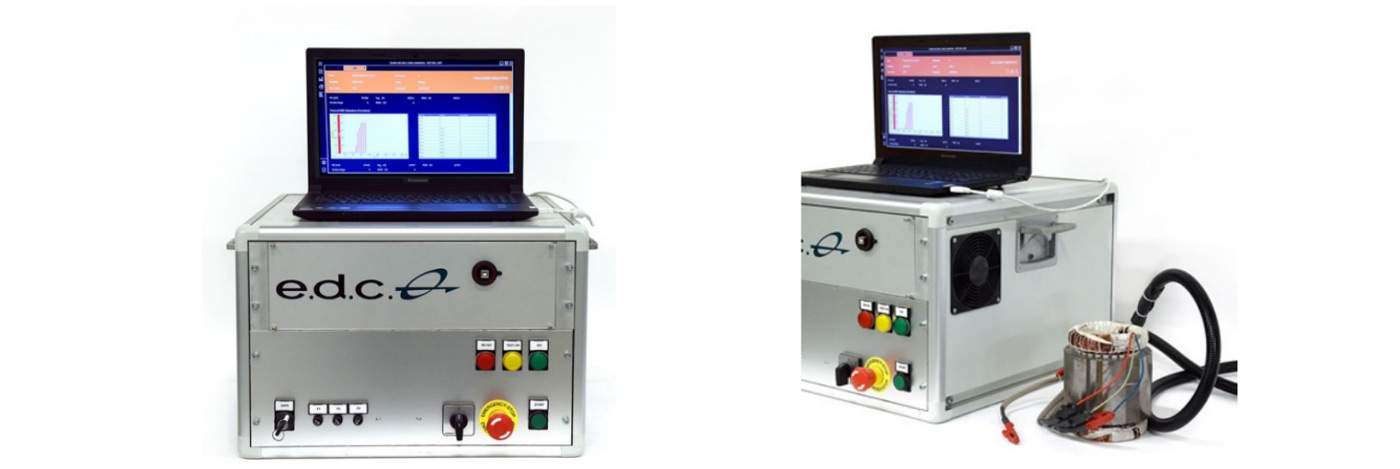Partial Discharge and other Electrical Test on eMotors of Marposs
Partial discharge initial voltage test (PDIV) can measure the insulation quality (material/process, etc.): in a laboratory environment, it is easy to compare different processes/materials to determine the best solution. In the production environment, ensure that the insulation test results of each stator are not inferior to the results of standard parts in the laboratory.
LT400 is a test system for partial discharge tests on parts (wires, plastic insulation products, etc.), windings, manufacturing processes, and end products (coils, motors, generators, transformers, etc.).
E.D.C. has been the first European company to study insulation testing (since 1998) and has innovatively proposed new testing methods that can identify insulation problems between winding and stack, or between turns of the same winding, that are not identified by standard high voltage and surge testing. These problems can cause motor failure after a short period of time (a few hours, a few days or weeks). Especially when the motor is driven by a frequency converter.
In addition to testing the stator/motor (driven by the frequency converter), partial discharge testing (especially PDIV testing) can also improve the production process quality of motors or windings:
• Verity the impregnation process by measuring the changes of stator before and after impregnation.
• Find manufacturing defects that cannot be found by traditional dielectric strength test and surge test.
• After a long period of stator/motor durability testing, the insulation material began to show a permanent "degradation" in insulation quality. PDIV testing evaluates materials and processes to identify the worst performing parts of the product long before the failure occurs, because the worst performance parts begin to “degrade” first. Most industrial production requires this kind of high reliable testing, and our new PDIV solution meets this requirement.











